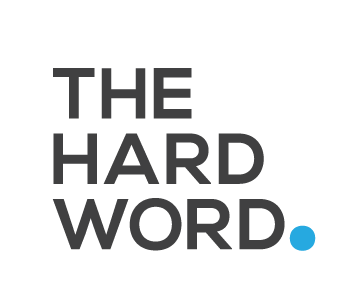Blog: The interview is the story
An editor of a major weekend magazine recently asked THE HARD WORD to run her team through a ‘how-to-interview’ course. She had looked around within the market and was amazed to discover that no such course existed. Despite the fact that interviewing is the second-most important tool in a journalist’s kit (after the ability to string words together), universities and other education bodies simply ignore the skill of interviewing, as if it cannot be taught.
But of course it can.
I worked my way through senior school and university in the phone room of a market research company and within those grey, carpeted booths I was shown the true meaning and value of skilled, measured interviewing. It’s called ‘probing’, and it’s a mix of intense listening and directed, topical questioning.
This is the reason that a brilliant interview tends to bring the two people involved closer together. If it is clear that somebody is listening with intent to what you have to say, it develops a strong feeling of connection. I have heard great interviewing referred to as ‘flirting’ more than once…
Probing is a skill that’s sadly lacking in the repertoire of many journalists today, who instead prefer to turn up with a set of ten pre-written questions. Once those ten questions are answered then the interview is over, but I was taught that the best interview is the one that doesn’t make it beyond the first prepared question.
Take, for instance, a market research interview about toothpaste. Ask somebody what it is that they like about their toothpaste and they will tell you that it has a nice, minty flavour and it makes their mouth feel fresh. The predictability of this answer means it’s completely useless information, and the journalistic equivalent result would be an incredibly dull story.
But the interviewer skilled in probing will, within three or four more questions, potentially have the respondent admitting that he is single, lonely, and relies on the confidence given to him by his toothpaste to go out and meet potential partners. It’s the journalistic equivalent result of a brilliant, exclusive piece.
There is a serious problem when a journalist hasn't been taught how to dig for a great story, how or when to probe or how to read the signs in what a respondent is saying. As a result the film star they’re interviewing tells them he did his own stunts. The CEO they’re speaking with tells them she’s made difficult but necessary decisions and is now looking forward to a bumper year. And the football player they’re questioning says he’s looking forward to his team doing the best they can and hopefully coming away with a win.
Yawn. It’s all completely predictable, and therefore completely useless, information.
Of course, there’s a lot more involved in skilled interviewing, including when to use specific types of questions, body language, use of silence, importance of banter, etc., but it can all be taught and most often it’s not. That’s sad for everyone, especially the readers. After all, without great interviews there are fewer great stories.
But if you ask the right questions then the story will reveal itself. After that, all you need to do is write - and that’s another story.
- IMAGE THANKS TO JON TYSON / UNSPLASH -





